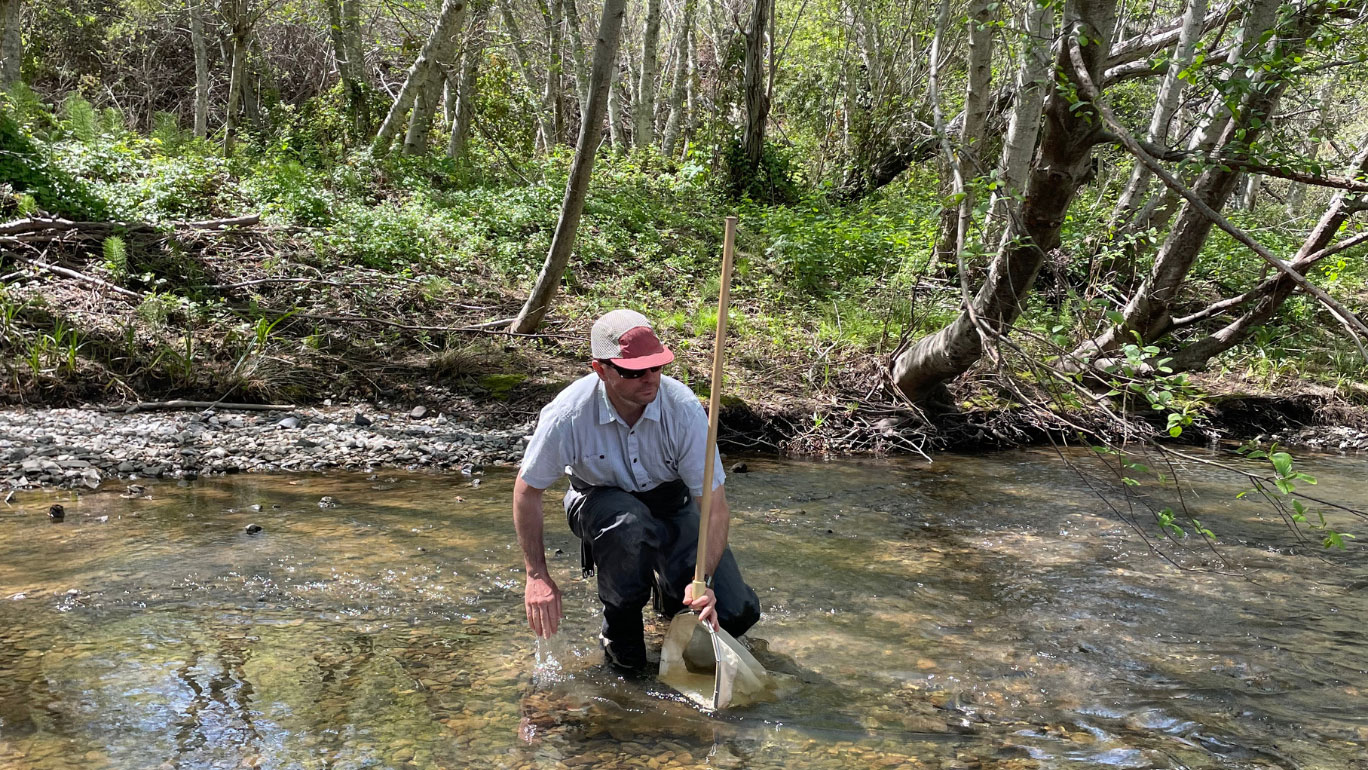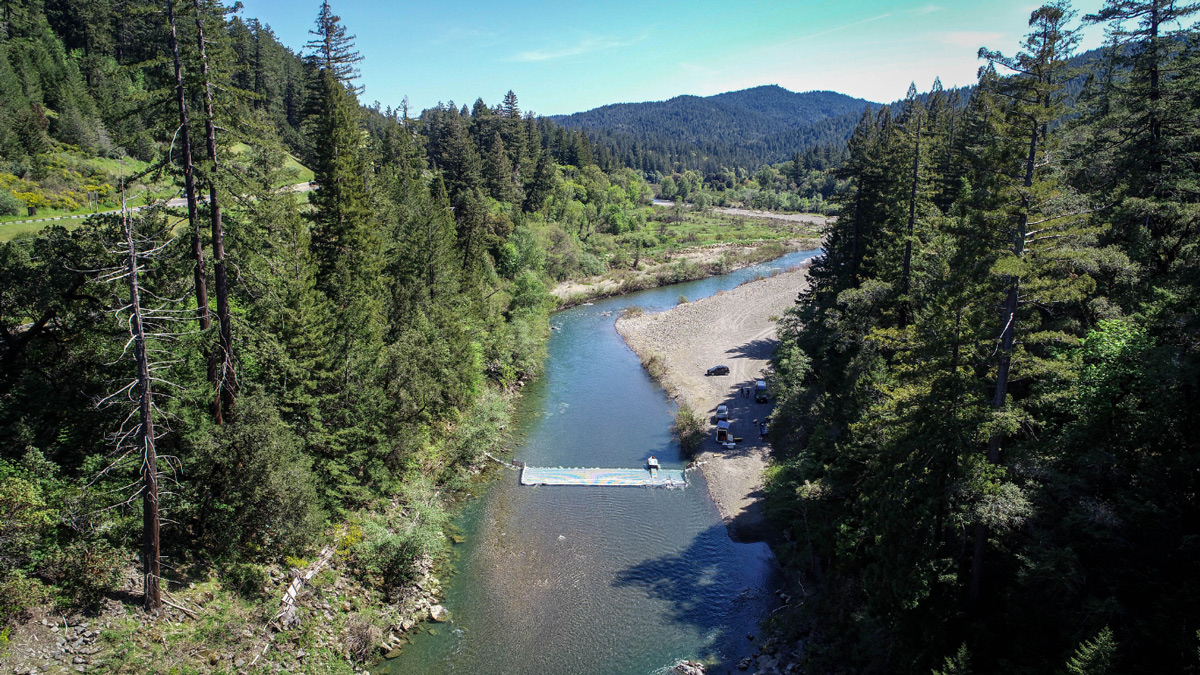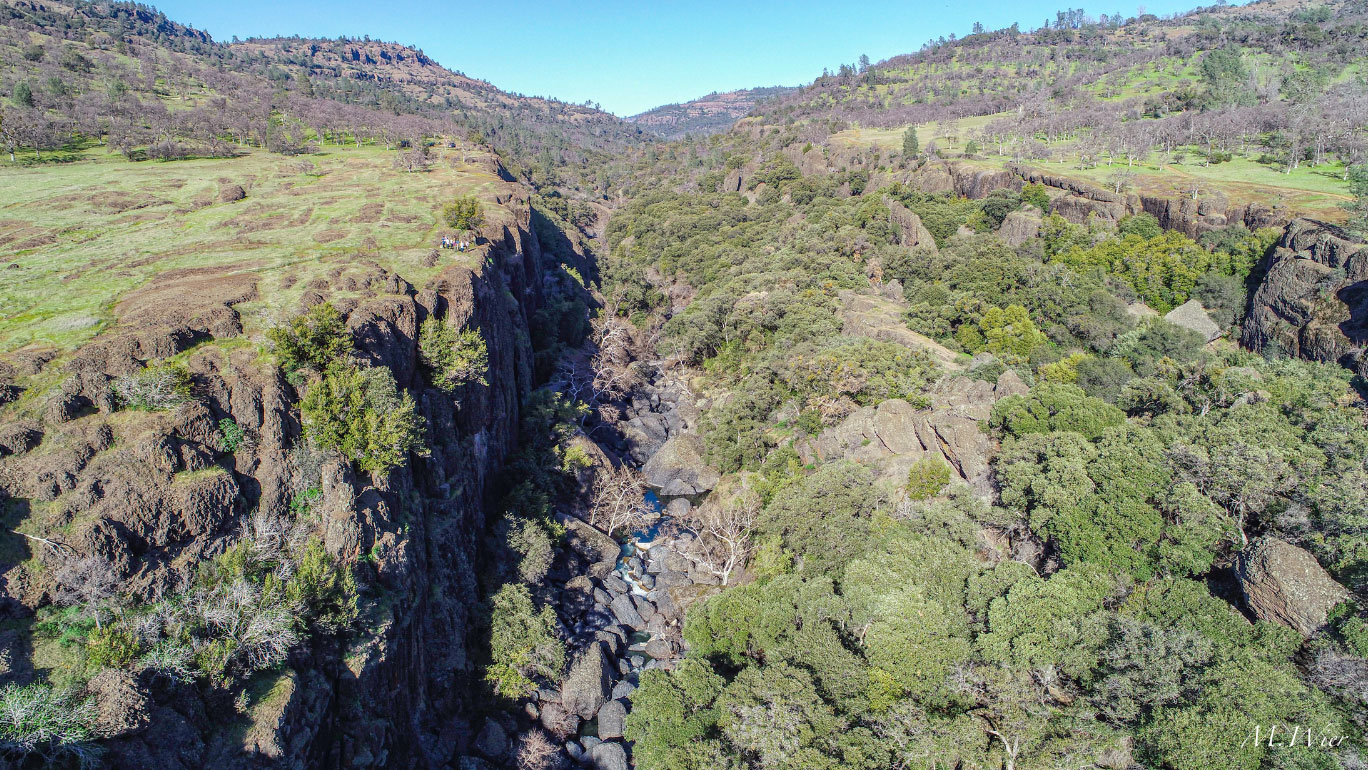“The Yurok Tribe are ‘fix the world’ people. Our high ceremonies dictate that we restore balance to the world,” said Barry McCovey, Senior Fisheries Biologist for the Yurok Tribe and Yurok Tribal member. “Looking at the Klamath River today, it is bisected by four dams, cutting off the energy flow. That is the definition of imbalance in an ecosystem.”
Over the past few decades, the Yurok Tribe, along with a coalition of other Klamath River tribes, conservation groups including CalTrout, commercial fishing interests, and more, have fought for the dams to be removed and for balance to be restored. By late fall of 2024, four of the Klamath River dams are expected to be removed. It will be the largest dam removal project in the history of the United States and the largest salmon restoration project ever. It will also begin to restore justice to the Tribes and indigenous peoples who have and continue to live along and rely upon the river.
"“The Yurok Tribe are ‘fix the world’ people."
BARRY MCCOVEY
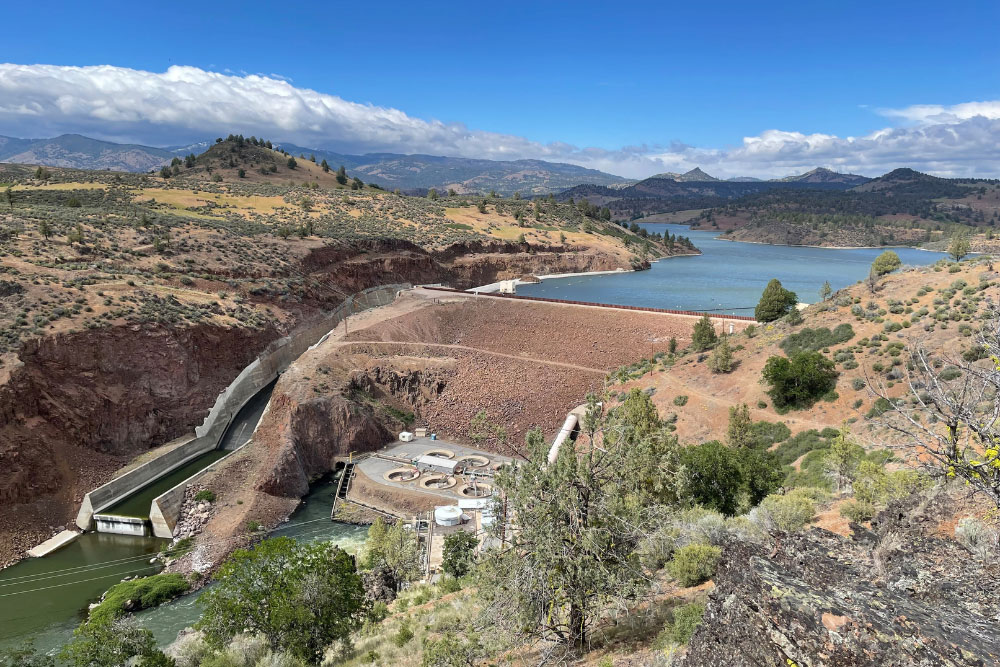
Iron Gate Dam blocks the Klamath River.
Extracting the Klamath
The Klamath River begins below the Cascade Mountains on the border of California and Oregon. For 257 miles it flows through forests, five hydroelectric dams, and countless communities before it ends its journey at the Pacific Ocean in California, just south of Crescent City. It is the second largest river in California and it is home to many including the Karuk, Hoopa, Klamath, and Yurok tribes.
Historically, the Klamath River was also one of the most productive rivers on the West Coast for spring-run Chinook salmon and other native fish. When the dams went in, the river and its fish populations broke down.
“I think of rivers like the arteries in your body,” said Robert “Rob” Lusardi, Ph.D. Lusardi serves as the Wild and Coldwater Fish Scientist with CalTrout and UC Davis, a collaborative position that bridges CalTrout’s restoration work with continued academic research on the Klamath and other rivers. “Arteries deliver blood and oxygen throughout the human body, similar to how rivers deliver organic matter throughout the watershed. What happens when an artery is blocked — that’s like when rivers are blocked. When a river is severed by a dam, the river can no longer function as it did for thousands of years.”
When the Klamath River was dammed, little regard was paid to the river itself. Its power was recognized as something to extract rather than protect.
"I was raised and educated with language that referred to rivers as resources, but others might say they were raised to see rivers as relatives."
DR. ANN WILLIS
Before starting with American Rivers, Willis worked as a Senior Research Engineer at the UC Davis Center for Watershed Sciences. Through her work to restore rivers and connect communities with them, Willis hopes to convey that the landscape isn’t an “other”. Natural spaces are not separate from how we live our day-to-day lives, but instead they are all part of an environment that we are participating in.
“I was raised and educated with language that referred to rivers as resources, but others might say they were raised to see rivers as relatives. Seeing that recognition of a different perspective, and the buy in and truth to the reality of that perspective, gives me a lot of hope,” Willis said.
Within human community, this shift in how individuals view natural places is not new, especially within Indigenous Californian communities.
“Pulling those dams out of the river and reconnecting the lower and upper basin for the first time in 100 years will be very meaningful to the Yurok people and other Tribes,” said McCovey. “It’s been a long time coming.”
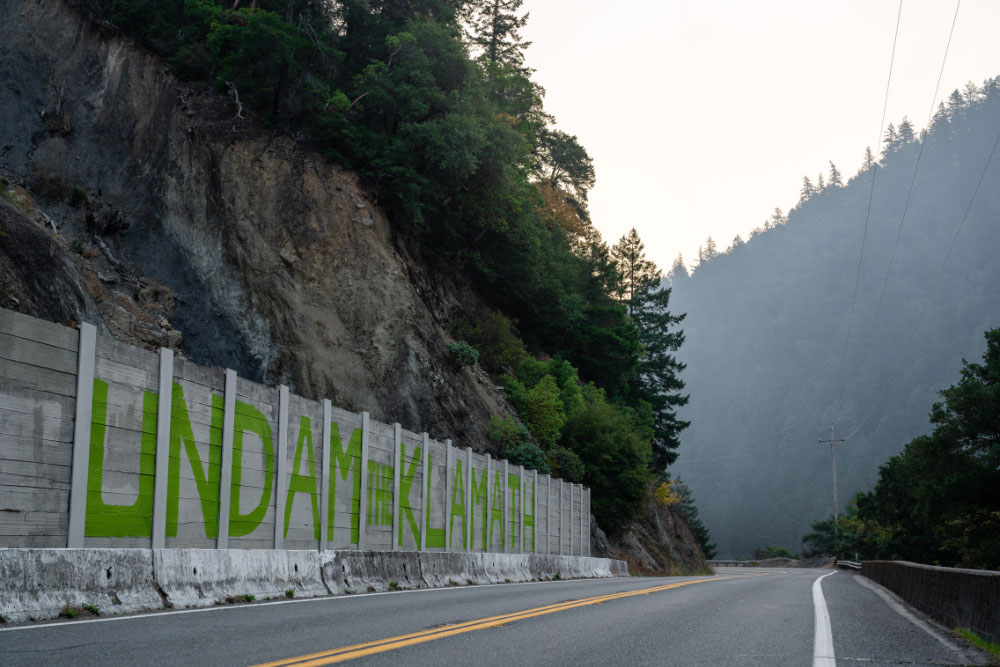
Undam the Klamath | Credit: Dominic Bruno
When Are the Dams Coming Out?
In March 2023, the Klamath River Renewal Corporation officially broke ground on removal activities for the Klamath River dams.
The Klamath River Renewal Corporation (KRRC) is the nonprofit corporation formed as an outcome of the amended Klamath Hydroelectric Settlement Agreement. The settlement agreement, amended in 2016, called for the formation of a dam removal entity that would be responsible for obtaining all necessary permits and completing legal, administrative, and technical work in anticipation of decommissioning the project, taking ownership of the project, and then decommissioning the project. CalTrout was deeply involved in the negotiations that led to this settlement, which turned the idea of dam removal into a fully funded project.
“I believe that [through dam removal] we are making an effort to create conditions that allow both salmonids and human communities to regain a toehold in this amazing watershed,” Klamath River Renewal Corporation Chief Executive Officer Mark Bransom said. “We are making an effort to restore some balance by creating conditions that acknowledge the world we’re living in today is not likely to be the same world that we’re living in tomorrow.”
By the end of September 2023, Copco #2 dam will be removed. Bransom anticipates drawdown of the reservoirs to begin in early January 2024 and to wrap up around May 2024. Physical dam removal will immediately follow the drawdown.
“By the late fall of 2024, we should have all of the dams removed and will have re-established a free-flowing condition in the mainstem through the entire hydroelectric reach,” Bransom said.
Towards the end of 2024, revegetation and restoration work will begin, extending into 2025 and beyond. Approximately 2,500 acres surrounding the river will receive some form of restoration work, primarily revegetation. Contractors have been busy collecting seeds and propagating thousands of plants in anticipation of the revegetation effort. For the restoration work, KRRC plans to take an adaptive management approach.
“We want to allow the river to reestablish itself and find its course over the period following dam removal,” Bransom said.
As they watch the mainstem of the channel take shape, KRRC will determine what restoration or habitat improvement work, if any, might be beneficial. Throughout the process, KRRC will monitor sediment transport and deposition, specifically looking at critical tributaries to ensure their connectivity to the mainstem remains intact.
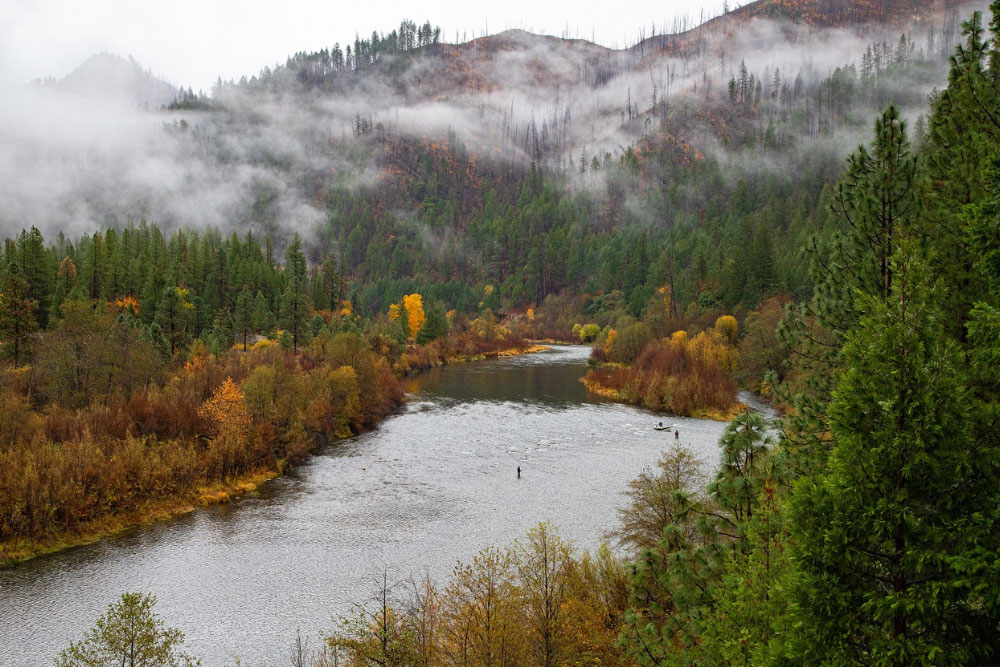
"These rivers are so complex. The different pieces of them come together in such a mysterious and miraculous way." - Ann Willis | Credit: Ken Moorish
Beyond Dam Removal
While dam removal is a huge step in the right direction, it won’t fix everything. “The whole system will not work unless every piece is figured out,” Lusardi explained.
Lusardi and his team, including researchers at the UC Davis Center for Watershed Sciences and Yurok Tribe biologists, have been studying the Klamath River watershed pre-dam removal to monitor the river and establish a baseline to compare post-dam removal conditions against.
“The Klamath will need adaptive management,” he explained. “This is where science comes into play. We are studying how the river is now, how it changes, how the runs change, and how fish change so if we see issues with the river, we can look at our data and adaptively manage the river moving forward.”
Equally important as looking at the Klamath itself is looking at its tributaries. The Shasta and Scott Rivers are the two largest tributaries to the Klamath River just below Iron Gate Dam. Both the Scott and Shasta rivers are critical for fish populations in the Klamath and are especially important to act as surrogate habitat for fish during dam removal and subsequent river recovery.
Historically, the Shasta River contributed about 1% of the total annual flow to the Klamath River. But not all streams are created equal, and some have a much greater ability to support cold-water ecosystems and the fish that depend on that cold water, Willis explained. Of the salmon that make their way into the Klamath River, the Shasta historically contributed about 50%.
“It’s useful to recognize that some tributaries have a huge impact, even if they are relatively modest in terms of their flow contributions and the amount of habitat they provide, because it helps us focus our efforts on a place where we can really have an impact,” Willis said.
CalTrout and UC Davis have been working for over 15 years in the Shasta and Scott River valleys, partnering with ranchers to update irrigation and water management practices. These efforts will improve habitat and flows and will allow wild fish populations to recolonize the Upper Klamath River above the dams.
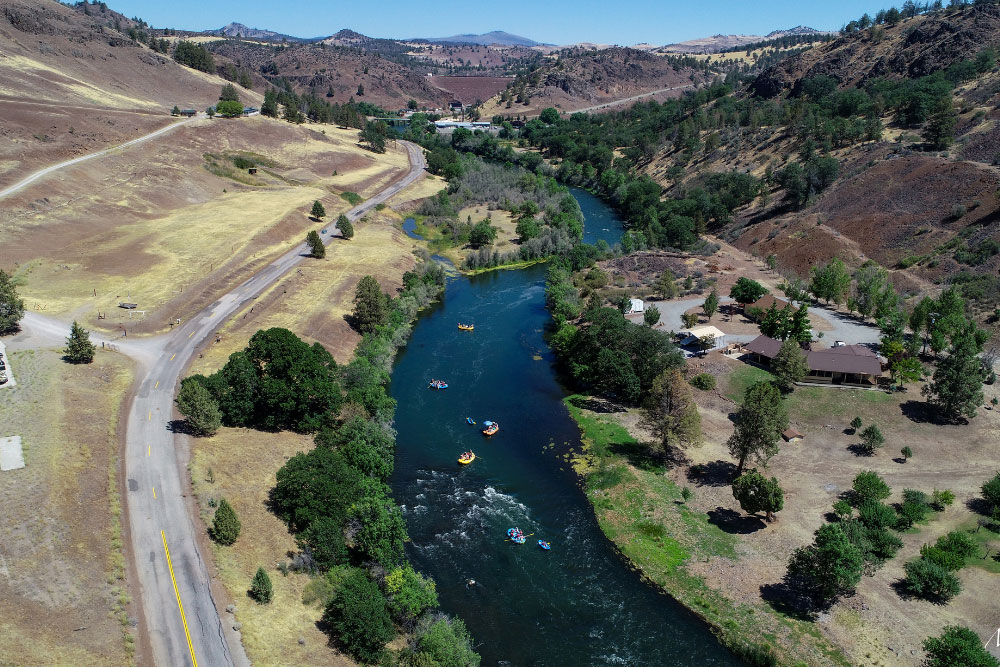
Rafters float the Klamath River, as Iron Gate Dam looms in the distance.
The Klamath Freed
While dam removal on the Klamath River is now certain, what happens after the dams come out is less certain. A dam removal and river restoration project of this scale has never been seen before. As a scientist, Willis is excited to see just how dramatically we may have underestimated the potential of the Klamath once the river is freed.
“These rivers are so complex. The different pieces of them come together in such a mysterious and miraculous way. It’s foolish to try and predict the outcome of [dam removal], and I think it’s almost more magical to be surprised by it and to choose to be open to learning what we don’t know,” Willis said.
“We have an amazing opportunity to learn about how fish respond to large-scale dam removals” said Damon Goodman, CalTrout Mt. Shasta-Klamath Regional Director. “Learning from the success of this project will inevitably accelerate other dam removals in California and elsewhere.“
Goodman is developing a study to answer the most basic question: how many fish will repopulate the Klamath River after dam removal? The project team is working directly with experts who have studied fish repopulating the Elwha River after dam removal and approaches for counting fish in the Smith River, Eel River, and many other large rivers around the West Coast. This is a collaborative project developed side-by-side with the Karuk Tribe, Yurok Tribe, RES, California Department of Fish and Wildlife, Oregon Department of Fish and Wildlife, NOAA Fisheries, U.S. Fish and Wildlife Service, Humboldt State University, and others. The team is slated to hit the ground later in 2023 and to follow along in the coming years as the river re-takes its course.
“Learning from the success of this project will inevitably accelerate other dam removals in California and elsewhere.“
DAMON GOODMAN
Having healthy functioning ecosystems, watersheds, and fish populations will enhance the health of our human communities and our human livelihoods. And there is perhaps no better case study for this than on the Klamath.
“Once the river is free flowing, anadromous fish will once again inhabit the upper basin where they haven’t been in over 100 years,” McCovey said. “When it will happen, we aren’t sure. But we are excited for when it does.”
Interviews with McCovey, Willis, Bransom, and Lusardi were repurposed from their interviews with California Trout for our Watershed Moments: Klamath River feature.

